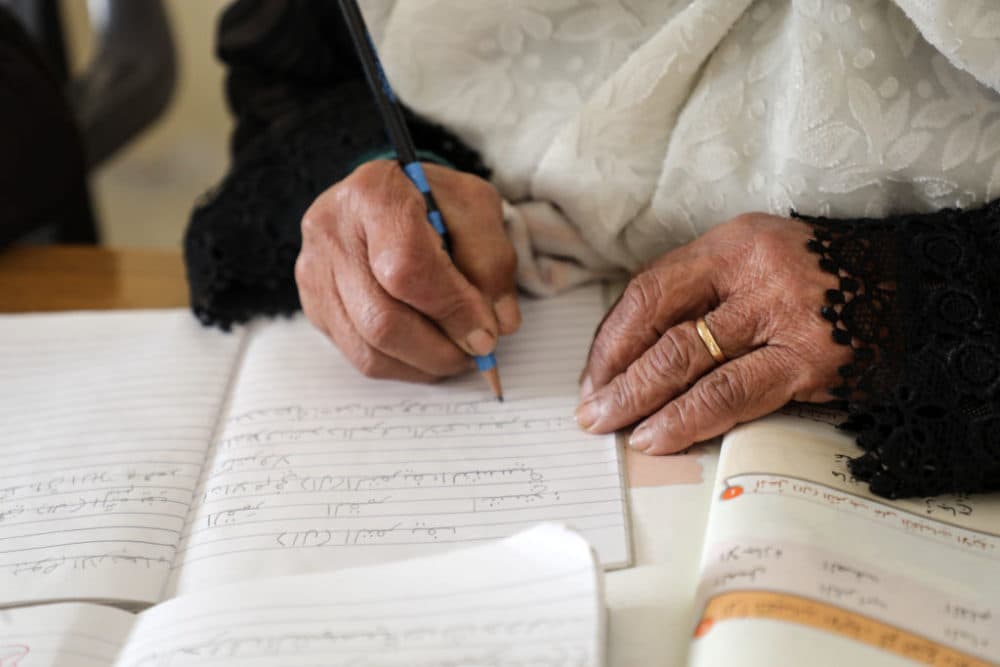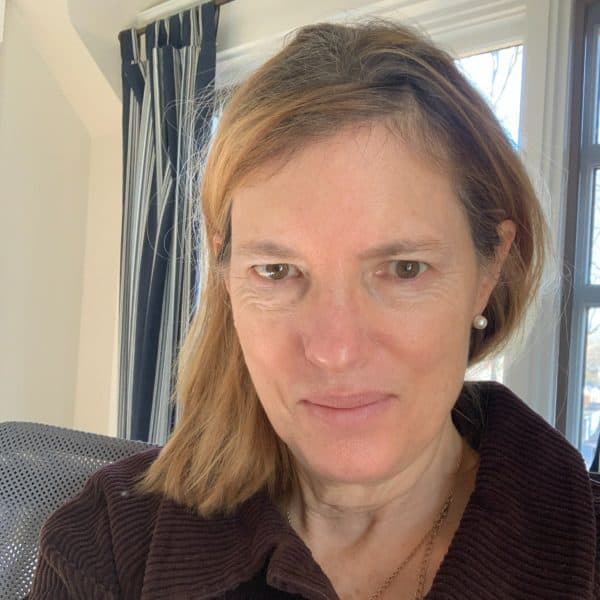Advertisement
Commentary
In this celestial infinity, we are here

It’s a warm October afternoon and my classroom has taken on a dangerous languor. I open windows and a humid blast scatters papers to the floor. My students shriek in mock horror and gather their worksheets. It might be time for “Stretch and Move,” which is a pretty formal way to say: bounce around, shake your hips and count to 50. The whole thing takes maybe five minutes but we rise, all women north of 60, and we shake it like a Polaroid picture.
I am in the Women’s Education Center at Rosie’s Place, a sanctuary for poor and homeless women. Twice a week, I travel between my home and a very different corner of the city, the Mass Pike shooting me back and forth like an above-ground pneumatic tube. The old trope, where a volunteer assesses her points of privilege by “giving back” needn’t be repeated here. I wish I could articulate my near mania when trying to reconcile these worlds but for now, please know it’s extreme.
I have taught ESL and literacy to women from more than a dozen countries. They have taught me about their food, their holidays, their history. I tell them I am from New Jersey. It impresses no one but they are unfailingly polite.
On this particular Tuesday, my class has been discussing a story that involves the moon and the sun. In “level three,” students are reasonably strong English speakers and readers. It is my job to sand off the rough spots in their writing and pronunciation. Today there is some obvious confusion around notions of the cosmos, in short, how it all hangs together. I field questions about whether the sun is actually the moon and how far away everything is from Earth. I speak slowly but I sense desperate incomprehension so I say that next class, we will sort it all out.
If our universe is mappable, my student’s logic went, then everything, including heaven should be represented.
I never underestimate my students. Some have educated backgrounds but need to slay the Germanic-born dragon of English grammar and pronunciation. I have taught a former accountant from Brazil, now a housekeeper in a Boston hotel. I have taught a chemist, a travel agent and a restaurant owner. And other women, though not formally educated, are brilliant, full stop. But sometimes knowledge gaps can’t be ignored. Due to extreme poverty or trauma or just because a woman was once a girl who was denied an education, in our class, we need to get back to basics.
To help with the lesson plan, I think of an exhibit of consecutive dioramas at the Science Museum, a display I am equally drawn to and repelled by. At the first stop, we see Earth, deeply familiar and cozy somehow. A pushed button prompts Boston to wink frantically. The next box represents our solar system, with swaggering Jupiter and twirling, party-girl Saturn. Press the button and yes, there we are again, third planet in the lineup. Up next is the Milky Way, with its billions of stars. Now our sun gets lost in the crowd, but quick, push the button, and a tiny blink pulses through. It’s us, I think and peer closer. The next and final black box in the display throws our Milky Way into the universal soup where our planet, solar system and galaxy completely disappear. I push the button, but we are lost out there.
Advertisement
I wanted to convey this vastness to my students. Universal infinity seemed a good reason to feel amazed on a Tuesday afternoon. I drew some visuals to support my barebones astronomy lesson. Four large rectangles crudely replicated the dioramas at the planetarium. Instead of a blinking light, a bright red arrow points at our quadrant of the planet, and I write “we are here!” Each of my rectangles zooms out farther from Earth until the fourth one encompasses our universe, with tiny dots representing different galaxies. My red pen didn’t point to Boston this time, because who could find us in all that celestial infinity?
“This is a lot of information,” said a student, a sharp-eyed woman I have taught for years. “I have one question. On this map, where is heaven?”
For once, my brain shut my mouth. That simple question opened a chasm between me, an apostate, and the deep metaphysical beliefs at the core of many of my students’ identities.
I, too, wanted ... to find the space my students had the capacity to imagine.
If our universe is mappable, my student’s logic went, then everything, including heaven should be represented. Why couldn’t we find it? My students wanted one more rectangle on the board. I wanted to honor them, because they are so deserving of my honor, but could only answer: “I don’t know where to put it.”
I, too, wanted a place where there were celestial alternatives to the abrupt and final answers on my flimsy handout, to find the space my students had the capacity to imagine. But for now, all I had to offer was what we had right then and there: a space that contained everything that was sacred to me. Personally, that was enough.
Later, when we took off our jackets and unwrapped our scarves, and began to dance and sing the numbers song, I imagined a big red arrow in the sky, pointing down at our tiny classroom filled with us old dancing women, rocking and rolling, and the words blazing: “We are here.”
